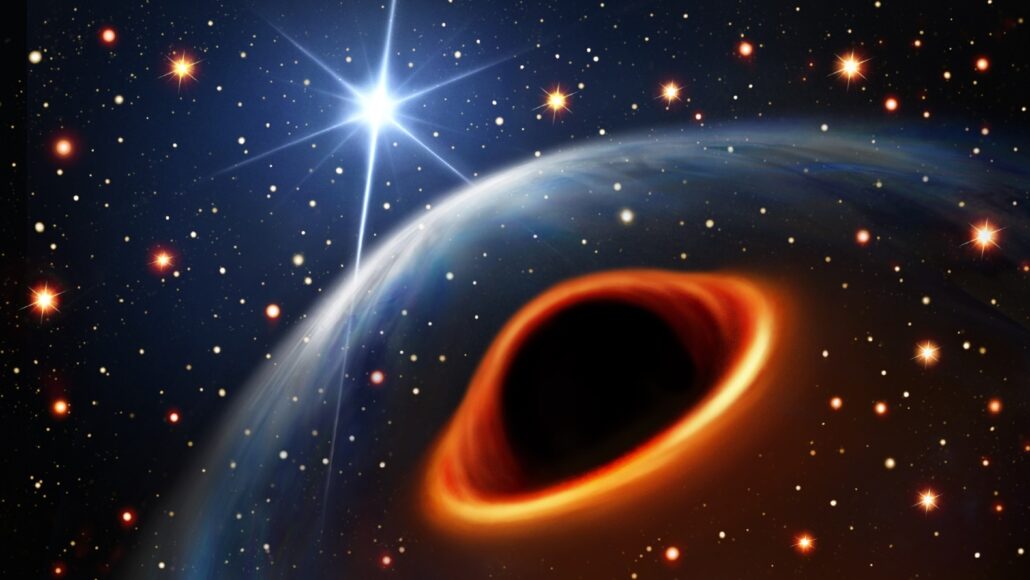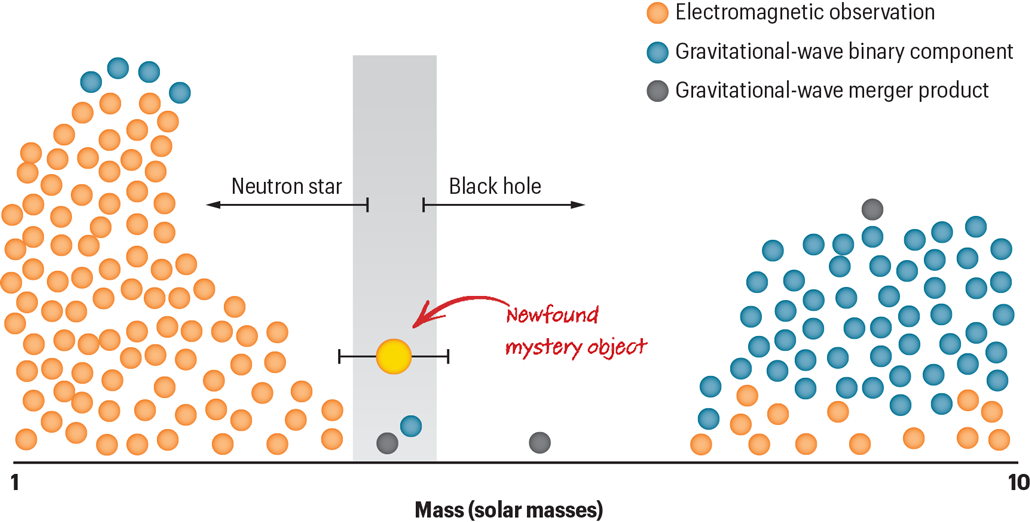Analyze This: A recently spotted space object is puzzling scientists
The curious entity’s mass lies between that of a black hole and a neutron star

Scientists have spotted an unseen object orbiting a pulsar, or spinning dead star. The mystery object could be a weirdly lightweight black hole (illustrated). Or it may be a very heavy neutron star — the remnant of a dead giant star.
Daniëlle Futselaar/artsource.nl
A mystery object has just been spotted in our galaxy. The puzzling entity could be a very heavy neutron star — the left-behind corpse of a giant star. Or maybe it’s one of the lightest black holes ever observed.
The MeerKAT Radio Telescope in South Africa spotted the unidentified object circling a pulsar. The observatory was monitoring pulsars in a star cluster 40,000 light years from Earth.
As these pulsars spin, they shoot out powerful beams of light, like cosmic lighthouses. Some pulsars’ beams flash by Earth as regularly as the ticking of a precise clock. If the flashes don’t arrive quite when expected, researchers can tell that another object in space is messing with the pulsar’s motion. They can use the timing of the light flashes to work out the other object’s mass.
The flashes of a pulsar called PSR J0514−4002E revealed an invisible companion. The object weighs 2.1 to 2.7 times the mass of the sun. That might make it too heavy to be a neutron star. But it would be lightweight for a black hole. Scientists suspect that once a neutron star gets to be about two to three times the mass of the sun, it collapses and forms a black hole. But no one knows at what mass this occurs. So astronomers can’t be entirely sure of the space object’s identity.
Researchers shared these findings in the January 19 Science. The team hopes to unveil the object’s identity as it continues to track the pulsar’s flashes. This may shed light on other similar space oddities, too.
Data Dive:
- Look at the X-axis. What does it mean to describe an object’s mass by “solar masses”?
- What type of observation is most common for neutron stars? What kind is most common for black holes?
- The data points on the left are neutron stars. Look at how their masses are clustered. Roughly what is their average mass?
- The data points on the right are black holes. Look at how their masses are clustered. Roughly what is their average mass?
- How does the mass of the new mystery object compare with that of neutron stars? How does it compare with the masses of black holes?








